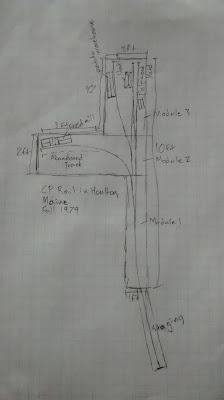Sorry that I haven't been posting much regularly, but I' ve been really busy with other, non-model railroading, things. In fact, I haven't even managed to post wordless wednesdays on time. This evening, though, I was finally able to get some modeling done. This evening, I assembled and painted two switchstand kits. These switchstand kits are made by Osborn Scale Models, and are laser cut wood and wire. The kit was fairly easy to assemble. I won't give an extensive written account of this - rather, the pictures will tell the story. My workbench at the start of the evening, with all the kit parts laid out and ready for assembly to begin. The switchstand bases after having holes for the posts drilled. The base on the right was rendered unusable by a drilling error on my part. Bases, posts, and a few other small pieces assembled. The entire switchstand assembled but not yet painted. The posts were provided much longer than neccesary, so I c...








